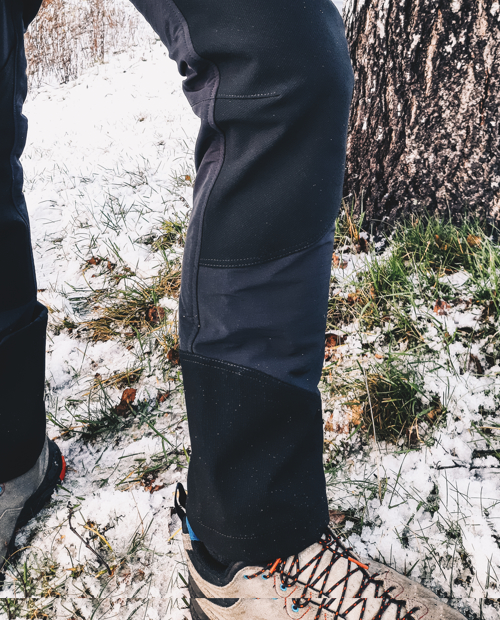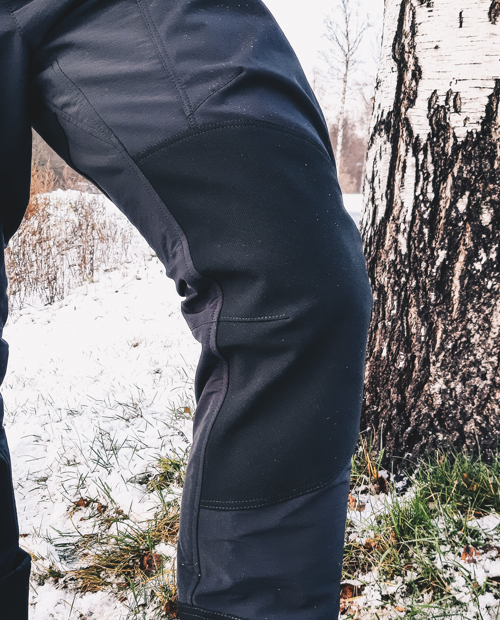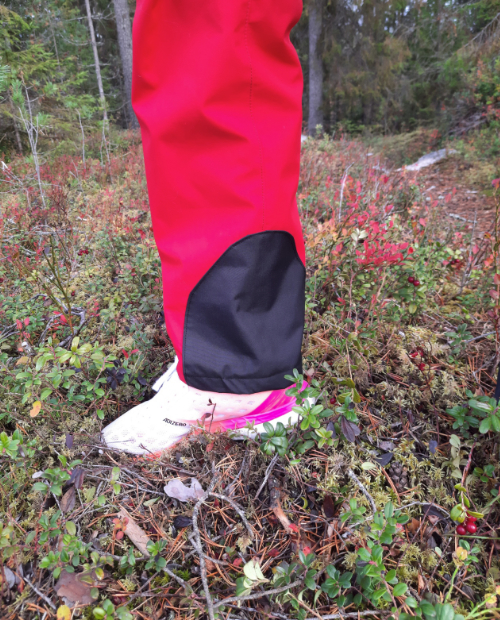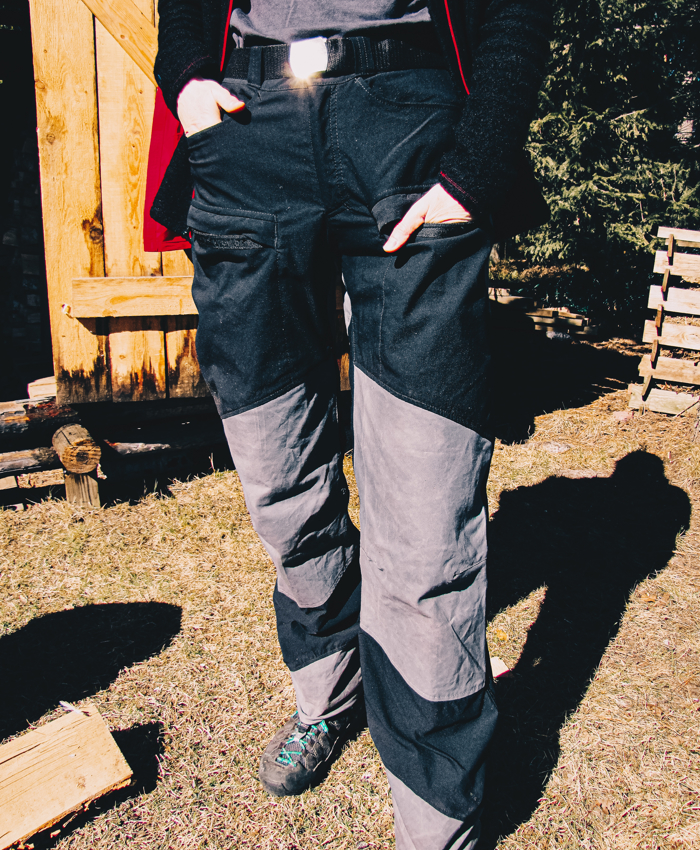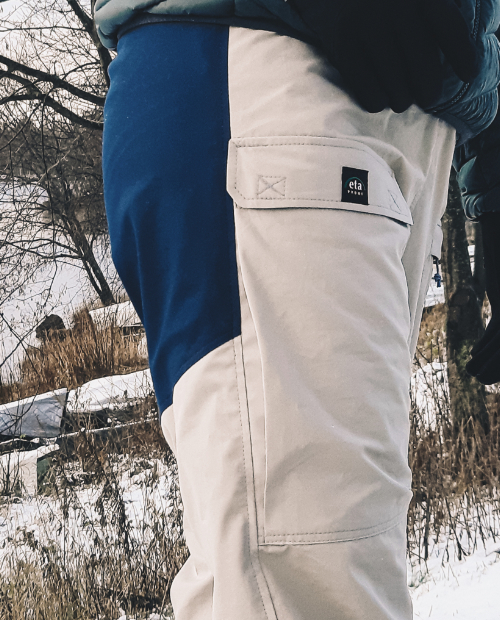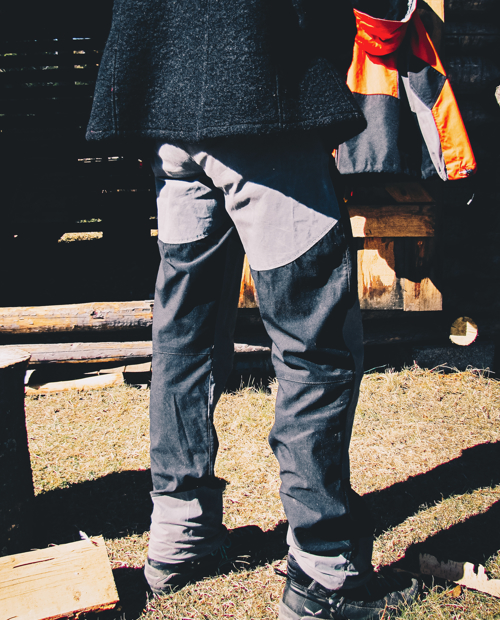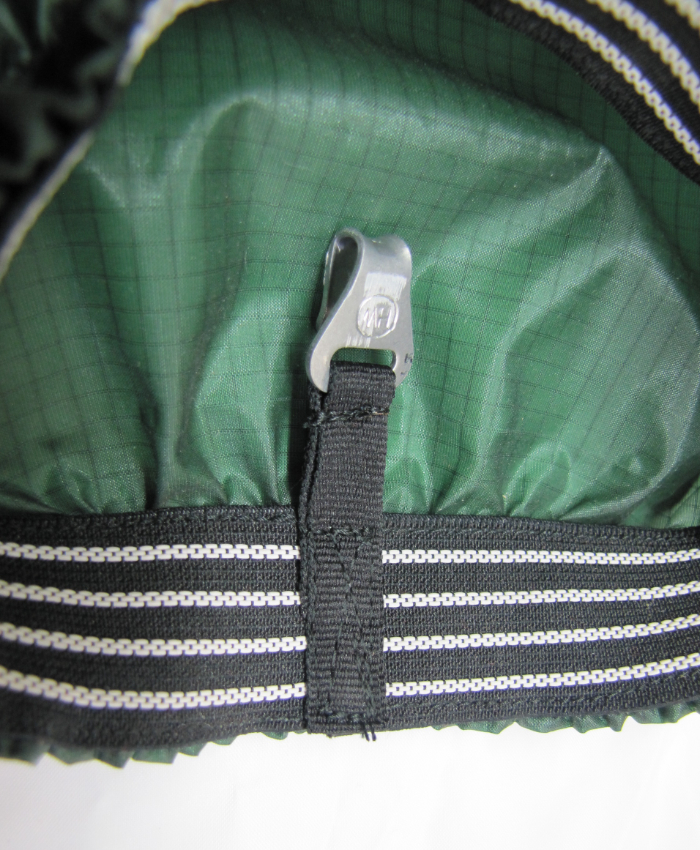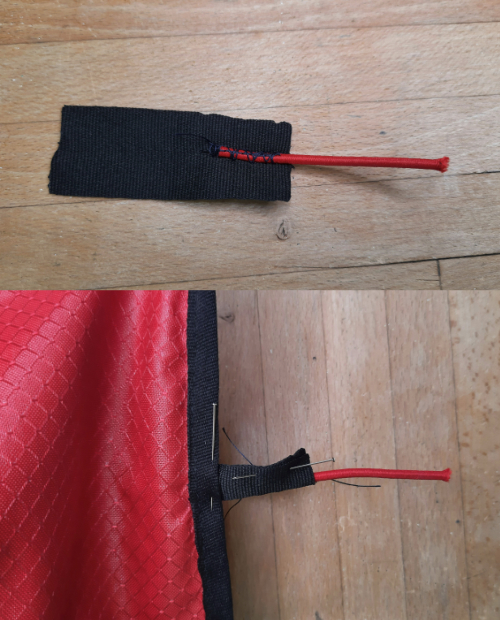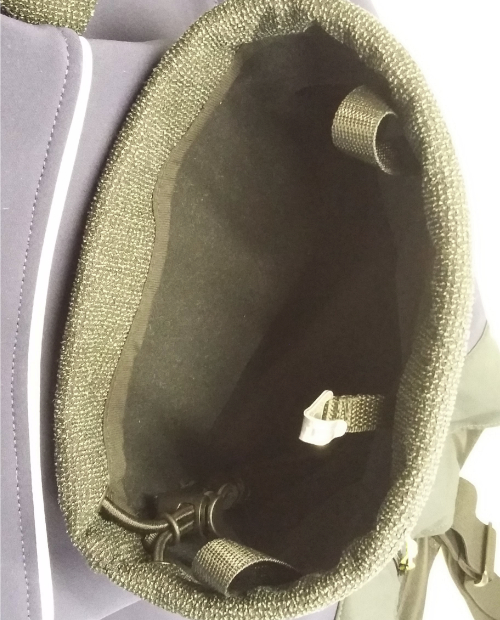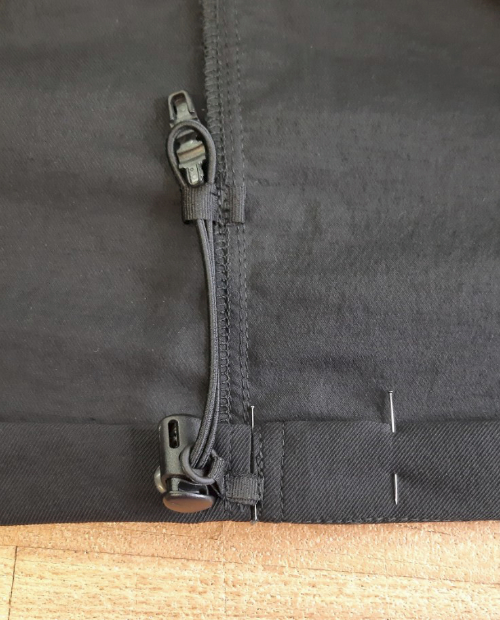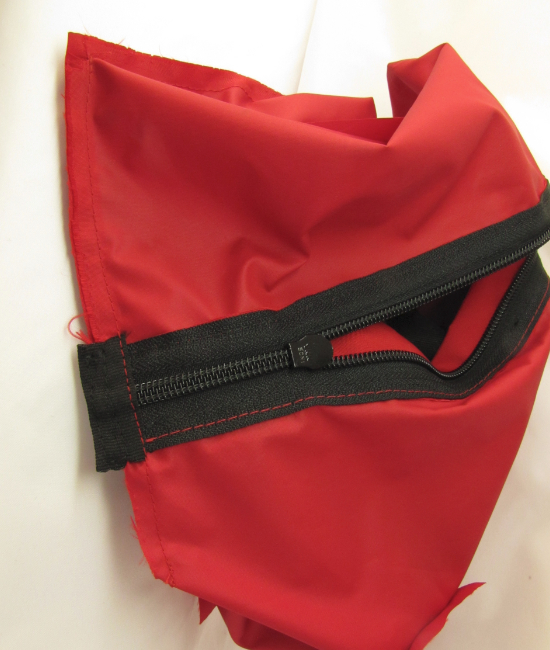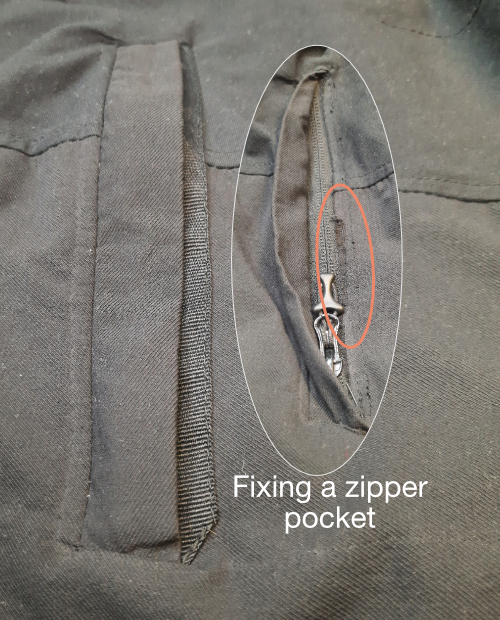Reinforcements
Reinforcements in general are a second more durable layer for protection. They are sewn on top of another fabric. A durable coated fabric provides protection from moisture as well as rough surfaces, sharp edges, debris or terrain when in use.
A small hem reinforcement protects the inseam nicely and does not add as much weight to the hem area as a full hem protection.
Use: Coated or uncoated, stretch or non-stretch Fabrics such as Cordura, Kevlar or Kebrotec.
